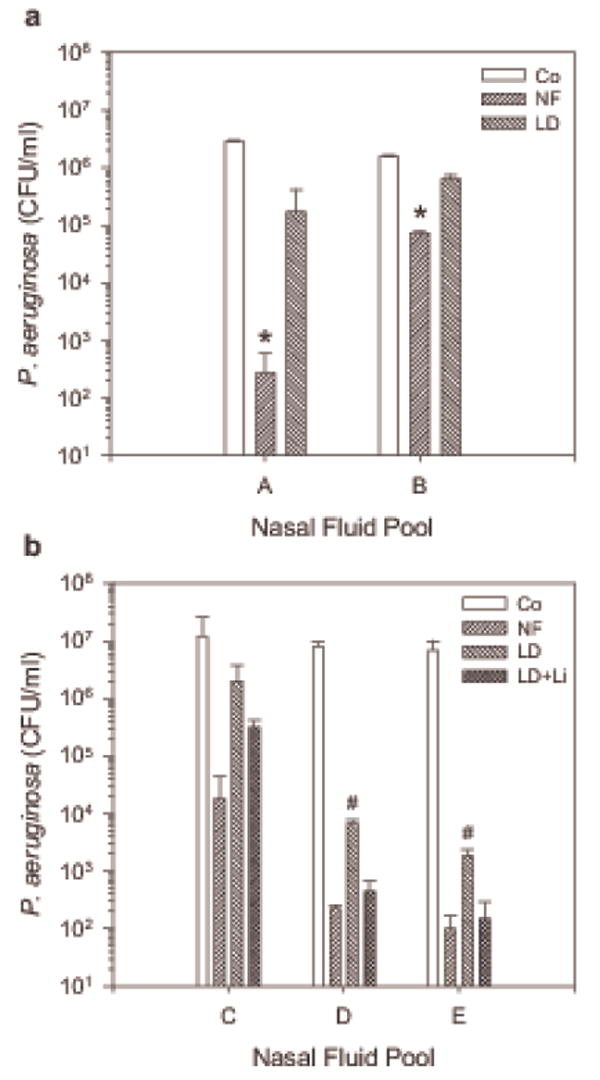Figure 5.

Lipids contribute to the inherent antimicrobial activity of nasal fluid. Nasal fluid (NF), lipid-depleted nasal fluid (LD), and LD supplemented with lipids extracted from the corresponding NF (LD + Li) were mixed with P. aeruginosa and CFU/ml were determined after 30 min incubation at 37°C. Co: bacteria incubated in buffer control. (a) A: NF pooled from donors D1, D2, and D3; B: NF pooled from donors D1, D2, and D5; * NF significantly reduced CFU/ml compared to the control (in paired t-test p = 0.022 for A, 0.023 for B), in contrast to LD. (b) C: NF pooled from donors D1 and D3; D: NF pooled from donors D1, D6, D9, and D10; E: NF pooled from donors D1, D5, D6, D9, and D11. Shown are the means + S.D. of two independent experiments conducted in duplicates for each nasal fluid pool. #: CFU/ml in LD are significantly increased compared to NF and LD + Li (in t-test p = 0.016 and p = 0.018, respectively, for C; p = 0.038 and p = 0.043, respectively, for D) while NF and LD + Li are statistically not different.
